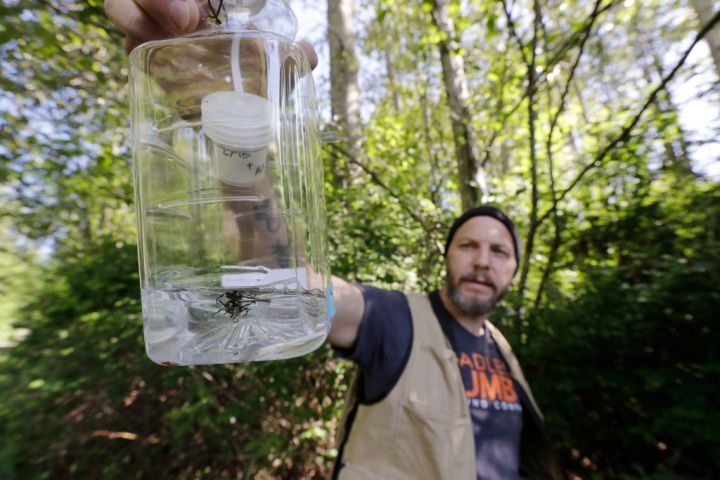
“Murder hornets” found in Washington raise concerns for U.S. agriculture
“Murder hornets” found in Washington raise concerns for U.S. agriculture

It takes a heavy-duty vacuum to suck Asian giant hornets out of their nest.
In a recent video from the Washington State Department of Agriculture, officials can be seen hunched over the base of a rotting alder tree in rural Whatcom County in Washington state. As they use a vacuum to remove the hornets, they wear what look like space suits, as typical beekeeping suits aren’t tough enough to shield them from potentially lethal stings.
This county in a far northwestern corner of the Pacific Northwest made headlines in 2020, when it recorded the country’s first Asian giant hornet nest. Now in 2021, the hornet is back: since August, three more nests have been identified, all in Whatcom County.

While the threat to human life is a real concern, “it’s not nearly as much of a concern as what they do to both honeybees and wild bees,” said Bob Peterson, an entomologist at Montana State University.
“They can attack a honeybee hive en masse, kill the workers, kill the queen, and then spend the next few days feeding on the immatures — the larvae,” Peterson said. “And so that is a direct economic consequence that is very troublesome.”
Troublesome to American agriculture: according to the USDA, pollinators are responsible for one in every three bites of food we eat, and increase the country’s annual crop values by more than $15 billion.
Nevertheless, “the Asian giant hornet alone is not likely to put those crops in jeopardy,” said Eric Lee-Mäder, a conservationist with the Xerces Society, a nonprofit that works to protect pollinators like bees and butterflies. “But [the Asian giant hornet] does add this compounding effect.”
Pollinators are under enough stress as it is, Lee-Mäder said: climate change, habitat loss, pesticides, “and so to have one more thing tipping the scales against pollinators — it’s not a welcome development.”
But that tipping point hasn’t been reached, at least not yet.
“We might be able to eradicate this species,” Peterson said. “There are some things that are going for us” — one being that only the queens can reproduce; the workers are sterile and cannot become queens, unlike some other wasps.
Another thing: we’re still early on. Only Whatcom County has had to wrestle with this species in the U.S. so far — not that you’d really want to wrestle with a murder hornet.
There’s a lot happening in the world. Through it all, Marketplace is here for you.
You rely on Marketplace to break down the world’s events and tell you how it affects you in a fact-based, approachable way. We rely on your financial support to keep making that possible.
Your donation today powers the independent journalism that you rely on. For just $5/month, you can help sustain Marketplace so we can keep reporting on the things that matter to you.











